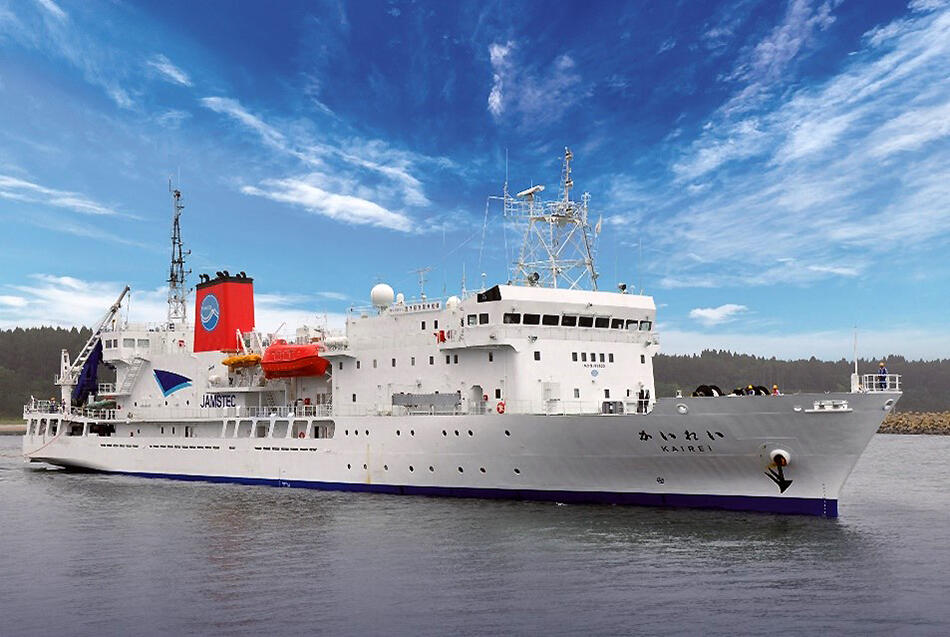
Provided by JAMSTEC
The deep-sea research vessel "KAIREI," which has conducted numerous surveys, has been retired. Since 1997, the Japan Agency for Marine-Earth Science and Technology has operated it as a support ship for the 11,000-meter class remotely operated vehicle "KAIKO" that can access the Marianas Trench. Kairei succeeded in collecting benthic organisms at Challenger Deep (water depth of about 10,900 meters) for the first time in the world in 1998. In 1999, parts of the H2 rocket No.8, which had been destroyed as a result of launch failure and fell off the coast of Ogasawara, were discovered from the seafloor at a depth of 2900 meters.
In the Nankai Trough, where a huge earthquake was predicted, a large-scale and high-density deep structural exploration was carried out, and a huge seamount was discovered. In 2000, hydrothermal activity and hydrothermal vent biotic communities were discovered at a water depth of 2450 meters in the central Indian ridge. ABISMO, a high depth small unmanned probe installed in 2008, conducted the world's first vertical multi-point water sampling from 150 meters to 10,258 meters in the Challenger Deep region of the Marianas Trench. Furthermore, it succeeded in collecting a 1.6-meter columnar mud sample, including water, from directly above the seabed at a maximum depth of 10,350 meters.
In 2011 the Tohoku earthquake occurred off the Pacific coast. Reflection seismological surveys and seafloor topography surveys were conducted at the epicenter of this earthquake. Researchers succeeded in confirming changes in the seafloor topography before and after the earthquake (moving approximately 50 meters from southeast to east-southeast and approximately 7 meters upwards). The long-term borehole observation system (high-precision temperature sensor array) installed on the scientific research vessel "Chikyu" was successfully recovered from under the seafloor at a depth of 6897 meters by the unmanned explorer KAIKO 7000II. In addition, ultra-high concentration rare earth mud was discovered from core samples collected from the seabed around Minamitori Island (water depth 5600-5800 meters).
In 2016, the existence of cobalt-rich crust on a seamount slope with a depth of more than 5,500 meters was confirmed for the first time in the world using the "KAIKO Mk-IV" at Takuyo No. 5 Seamount, and a sample was successfully collected. Fish were successfully photographed at a depth of 8178 meters in the Marianas Trench in 2017. This set the record for world's deepest video record of fishes. In 2018, the vessel was used to conduct a large-scale seismic structure exploration using ocean-bottom seismometers placed on parts of the Pacific plate that were about to sink into the Japan Trench and the Chishima Trench. Alteration of the oceanic crust structure due to the huge outer rise seismic activity was discovered.
This article has been translated by JST with permission from The Science News Ltd.(https://sci-news.co.jp/). Unauthorized reproduction of the article and photographs is prohibited.




